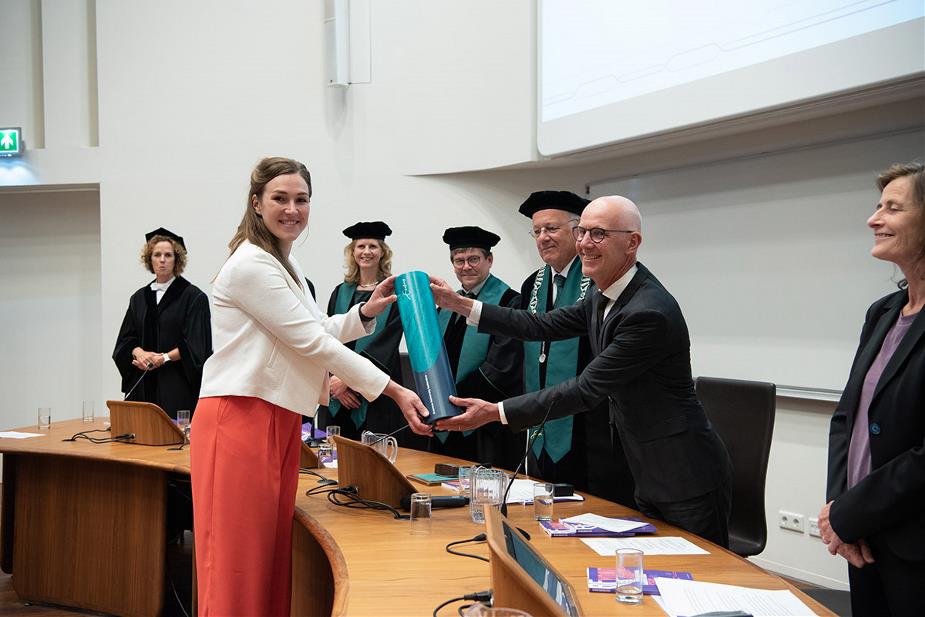Better rehabilitation through wearables?
1 August 2022
Activity monitors, also known as ‘wearables’, measure your posture and movements in everyday life in an objective, reliable and user-friendly way.

Activity monitors, also known as ‘wearables’, measure your posture and movements in everyday life in an objective, reliable and user-friendly way. The versions for healthy people are selling like hot cakes, but these kinds of measuring instruments are also very promising in health care. Lecturer-researcher Hanneke Braakhuis investigated: How can these devices be meaningfully applied in rehabilitation processes? She defended her thesis on 6 July at the ErasmusMC in Rotterdam. The most important message: ‘The use of these sensors has great potential, but there is still a lot to discover.’
To promote the proper recovery of rehabilitation patients with fewer health risks, it’s important that they exercise in the right way and enough. The use of activity monitors seems ideal here: they give the patient automatic feedback, reducing the need for intervention by a professional. ‘But there are a lot of aspects to consider,’ Hanneke states. ‘First of all, the enormous proliferation of different technologies, each one with its own possibilities and limitations. Rehabilitation doctors and physiotherapists who want to work with wearables must be able to make an informed choice. What do you deploy and when?’
What do you measure, how and why?
In her research, Hanneke focused on three themes. The first focus was on the various outcome measures. What can you measure and how, why is it useful and in which cases? The research shows that important information can be lost if we don’t use the right outcome measures. Hanneke: ‘In MS patients, for example, it’s important to measure the activities throughout the day, because they cannot move for long periods at a time. So there are different measuring criteria for every group or even for each patient,’ she explains. ‘Counting steps, of course, is useless if someone is unable to stand yet. You really have to carefully analyse the situation, goals and state of the patient.’
A good addition
A second theme was: how do the results of the measurements relate to what we are already measuring? In other words, are patients’ exercise patterns not already mapped out well? ‘Currently, a patient’s progress is already measured in clinical trials,’ says Hanneke. ‘In practice, we often assume that the results of these clinical tests are an indication of how active the patient is in daily life. We compared the estimates from the clinical trials to the measurements from the wearables, and it turned out that they were often wrong. Actually, only the clinical walking test is a good predictor of the intensity of activities in daily life. So in the other tests, the use of wearables is actually a really good addition.’
Role of students
‘The final theme was to find out how wearables are already being used in practice and what the experiences are. For this purpose, we conducted a survey among physiotherapists. The input of a Human Kinetic Technology student who is also a physiotherapist was also valuable,’ she says. ‘In any case, many students have contributed in different ways. For example, they participated in the data analysis and provided important insights into how we can apply the data. There were also students who went to rehabilitation centres for work experience internships, to educate patients and hand out wearables. Through various internships, graduation projects, contacts with the professional field and different lectures, a good connection between research and education was created.’

There is still a lot to gain
Hanneke sees her thesis as a good reason for follow-up research. ‘We have answered some questions, but other questions have also emerged. There is still much to be gained in the meaningful use of wearable technology in rehabilitation. This requires future collaboration by various disciplines, such as researchers, designers, healthcare professionals, educational institutions and commercial parties.’